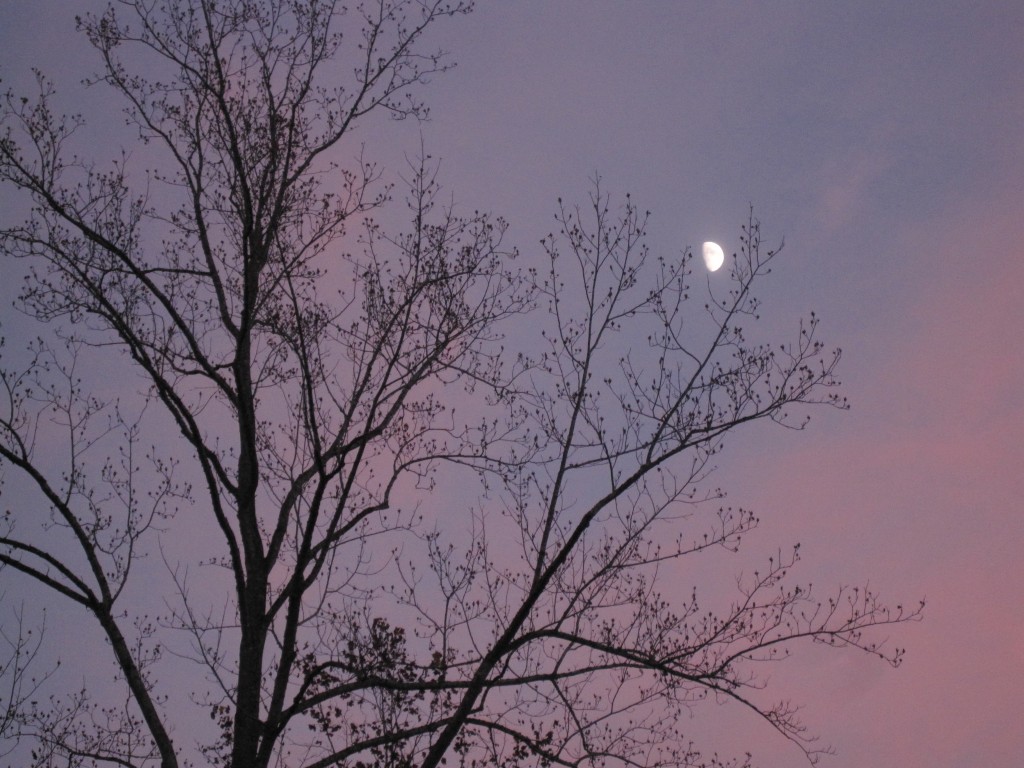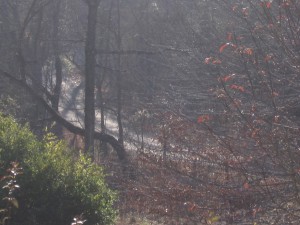Another mild autumn. We had nasturtiums and marigolds until the first killing frost November 6th and have been living in a web of benevolent days since. But it’s still brisk at night, the wood stove is welcome, and the low angle of the sun and clear evening skies show off the pale tints of winter.
Dark trees silhouette against pink and blue above a brown carpet of oak and hickory, not a leaf left on the tulip poplars that etch the hilltops with their candelabras of samaras.
The loss of leaves opens up the horizon a bit and watching the stars and planets is one of the pleasures of the season. Orion, a winter constellation not visible during summer, and the planet Jupiter journey across the ecliptic as we tilt into the season and always make me think of Tennyson’s Locksley Hall:
Many a night from yonder ivied casement, ere I went to rest,
Did I look on great Orion sloping slowly to the west.
Unlike Tennyson, who must have been a night owl (with an unobstructed view to the west), I watch Orion rise in the southeast most evenings, climbing up behind the scrimshaw of our little hill and setting on a low arc. Though circumscribed with a twiggy oculus, the nights are dark and unpolluted here in the hollow.
I greatly enjoy the National Audubon Society Field Guide to the Night Sky with its monthly sky tours and tellings of the various legends behind the constellations. Arguably the best-known, Orion, the Hunter, is seen all over the world and appears in Homer’s Odyssey. The three stars on his belt sparkle as he points his great bow towards the Pleiades, with the dog star Sirius at his feet.
Celestial goings on are a welcome diversion from the situation on the ground where we are enduring VDOT’s attempts to “improve” the road.
Surely there is a better way than this:
We hate to see such ugly, impermeable surfaces slathered on top of this delicate ecosystem. Stay tuned as we look for ways to bring 21st century engineering to the hollow that will protect the delicate interface between this road, which has been here since colonial times and served native Americans before that, and the creeks, wetlands and woods that it runs through.




